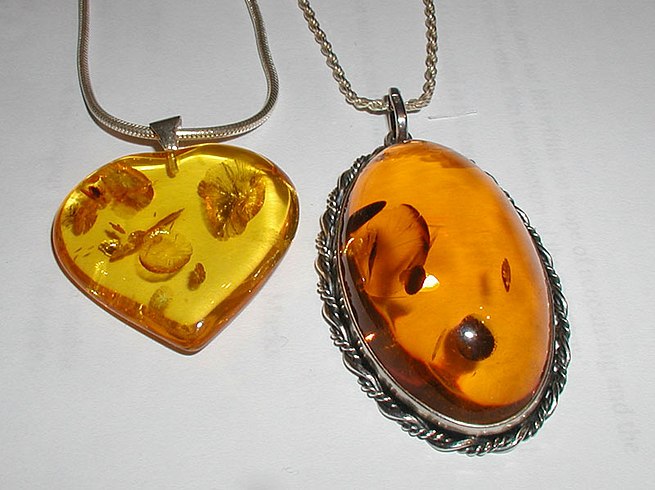
Main Difference
The main difference between Pendant and Locket is that the Pendant is a piece of jewelry made to hang from a cord, chain, ribbon or necklace and Locket is a type of pendant jewellery
-
Pendant
The word pendant derives from the Latin word pendere and Old French word pendr, both of which translate to “to hang down”. It comes in the form of a loose-hanging piece of jewellery, generally attached by a small loop to a necklace, which may be known as a “pendant necklace”. A pendant earring is an earring with a piece hanging down. In modern French, pendant is the gerund form of pendre (” to hang”) and also means “during”. The extent to which the design of a pendant can be incorporated into an overall necklace makes it not always accurate to treat them as separate items.In some cases, though, the separation between necklace and pendant is far clearer.
-
Locket
A locket is a pendant that opens to reveal a space used for storing a photograph or other small item such as a lock of hair. Lockets are usually given to loved ones on holidays such as Valentine’s Day and occasions such as christenings, weddings and, most noticeably during the Victorian Age, funerals. Historically, they often opened to reveal a portrait miniature.
Lockets are generally worn on chains around the neck and often hold a photo of the person who gave the locket, or they could form part of a charm bracelet. They come in many shapes such as ovals, hearts and circles and are usually made of precious metals such as gold or silver befitting their status as decorative jewellery.
Lockets usually hold only one or two photographs, but some specially made lockets can hold up to eight. Some lockets have been fashioned as ‘spinner’ lockets, where the bail that attaches to the necklace chain is attached but not fixed to the locket itself which is free to spin. This was a common style in the Victorian Age. Around 1860 memento lockets started to replace mourning rings as the preferred style of mourning jewellery.Keepsake lockets can also be made with a glass pane at the front so that what is inside can be seen without opening the locket. Such lockets are generally used for items like locks of hair which could fall out and become lost if the locket were repeatedly opened, whereas photograph lockets are generally enclosed on all sides and the photographs are secured by pieces of clear plastic.
Another kind of locket still made was in a filigree style with a small cushion in the centre to which a few drops of perfume should be added. Perfume lockets were popular in eras when personal hygiene was restricted and sweet smelling perfume was used to mask the odour of a person or their companions.
Very rare World War I- and World War II-era British and American military uniform locket buttons exist, containing miniature working compasses.
-
Pendant (noun)
A supporting post attached to the main rafter. from 14th c.
-
Pendant (noun)
A piece of jewellery which hangs down as an ornament, especially worn on a chain around the neck. from 15th c.
-
Pendant (noun)
The dangling part of an earring. from 16th c.
-
Pendant (noun)
A short rope hanging down, used to attach hooks for tackles; a pennant. from 15th c.
-
Pendant (noun)
One of a pair; a counterpart.
“One vase is the pendant to the other vase.”
-
Pendant (noun)
An appendix or addition, as to a book.
-
Pendant (noun)
Testicles. 15th-17th c.
-
Pendant (noun)
A pendulum.
-
Pendant (noun)
The stem and ring of a watch, by which it is suspended.
-
Pendant (noun)
A lamp hanging from the roof.
-
Pendant (noun)
An ornament of wood or of stone hanging downwards from a roof.
-
Pendant (noun)
A long narrow flag at the head of the principal mast in a royal ship.
-
Locket (noun)
A pendant that opens to reveal a space used for storing a photograph or other small item.
-
Locket (noun)
The upper metallic cap of a sword’s scabbard.
-
Locket (noun)
A small white marking on a cat’s coat.
